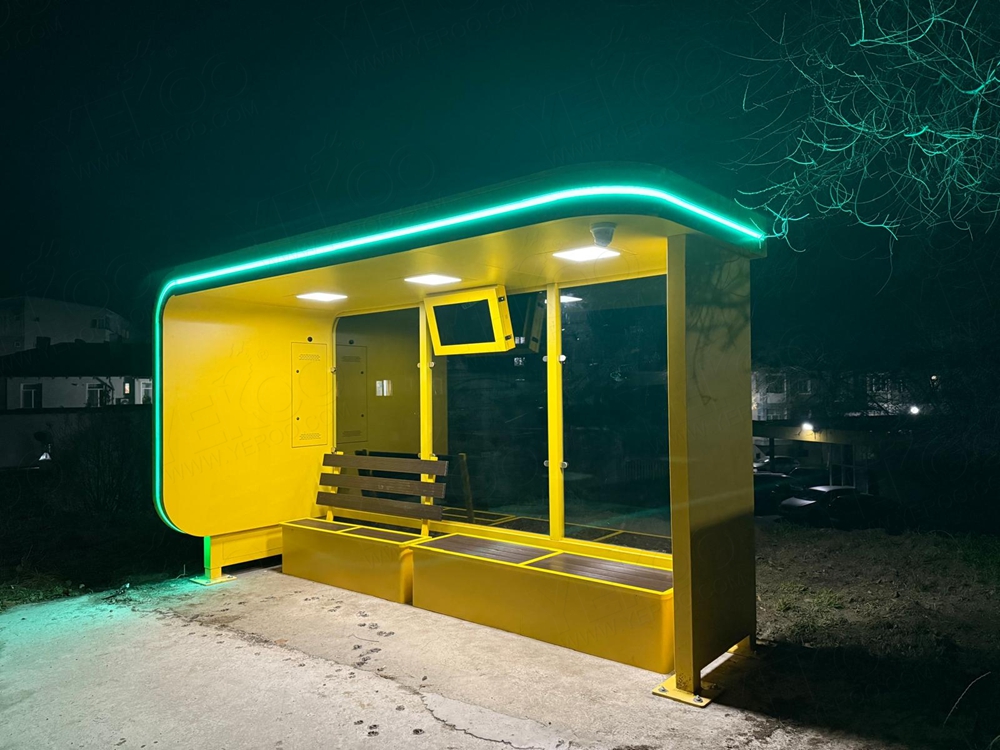Bus shelters are essential urban infrastructure, providing passengers with protection from weather and enhancing public transit accessibility. As cities evolve, these structures also reflect advancements in sustainability, technology, and social equity.
1. Design and Material Innovation
Modern bus shelters prioritize durability, aesthetics, and user comfort. Key considerations include:
Materials: Stainless steel, aluminum, and weather-resistant polymers are popular for their longevity and low maintenance. Innovations like 3D-printed shelters—constructed from recycled construction waste—showcase eco-friendly solutions.
Aesthetic Integration: Designs often align with a city’s cultural identity, blending functionality with artistic elements to elevate urban landscapes.
Ergonomics: Features such as seating, lighting, and accessibility ramps improve user experience and inclusivity.
2. Smart Technology Integration
AI and IoT are transforming bus shelters into interactive hubs:
Real-Time Data: Smart shelters display bus arrival times, route updates, and service alerts via digital screens.
AI-Driven Analysis: Studies use deep learning and street-view imagery to evaluate shelter distribution patterns, identifying gaps in underserved neighborhoods.
Safety Enhancements: Surveillance cameras and emergency call buttons enhance passenger security.

3. Socio-Spatial Equity and Accessibility
Equitable shelter distribution is critical for mobility justice:
Population Density:High-density areas typically have more shelters, but disparities exist. In some U.S. cities, minority-dominated neighborhoods lack adequate coverage despite higher transit reliance.
Policy Advocacy: Addressing these gaps requires data-driven urban planning to ensure shelters serve all communities fairly.
4. Advertising Opportunities
Bus shelters double as high-impact advertising platforms:
Targeted Exposure: Locations near commercial hubs or residential areas maximize brand visibility.
Creative Formats: Dynamic digital ads, QR codes, and interactive displays engage commuters effectively.
Cost Efficiency: Lower cost-per-thousand impressions (CPM) compared to TV or radio ads make them ideal for local and national campaigns.
5. Sustainability Trends
Eco-conscious designs are gaining traction:
Recycled Materials: 3D-printed shelters repurpose industrial waste, reducing environmental footprints.
Solar Lighting: Energy-efficient LED systems powered by solar panels cut operational costs.
Bus shelters are more than utilitarian structures—they embody technological progress, social equity, and environmental responsibility. By integrating smart features, sustainable materials, and equitable planning, cities can create transit systems that serve everyone. For SEO optimization, focus on keywords like "sustainable bus shelters," "AI in public transit," and "urban mobility solutions."
bus shelter design smart bus shelters








 Share to:
Share to: